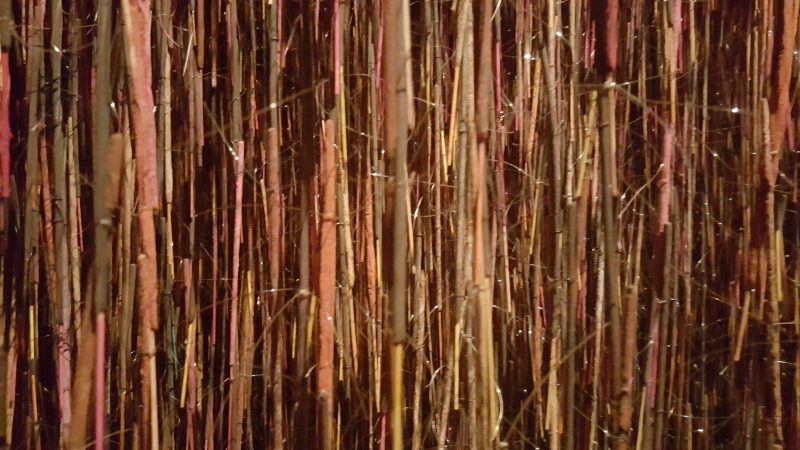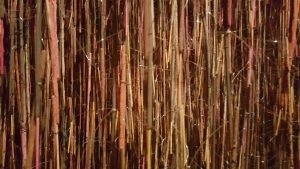Part 1:
Singapore Biennale 2016: An Atlas of Mirrors
The exhibit that I find most interesting is Growing by Hemali Bhuta. Growing is informed by the Buddhist concept of dependent co-origination: human beings are a unique species, yet form part of the larger whole that is Nature; both are subject to the same cycles of birth, growth and death. I am personally attached to this exhibit because this installation is made up of a unusual material, incense sticks and because I am a Buddhist myself I find it intriguing that someone actually used incense sticks in Art. My impression of incense in always something very holy, something I will not touch unless to worship the god or the dead. However Hemali Bhuta used incense sticks as a connection to the dead which represents death. And because the installation is made of incense sticks of different fragrances, I could smell it from far away and I was very curious where does the smell came from. This smell represented us as living beings taking most spaces.
This installation is made of Incense sticks, monofilament threads, metal weights, tape, staple pins and hooks. Hemali Bhuta is process-based artist, she loves to explore the colours, textures, sizes and smells of various objects and tools. She is also interested in the tactile qualities of vernacular everyday materials, and their potential to be transformed into aesthetically pleasing artworks that provides a new perspective to the viewer.
Project URL: https://www.singaporebiennale.org/pdf/artist-folios-pdf/Zone1_HemaliBhuta.pdf
Part 2:
In response to Kim Goodwin’s “Designing for the Digital Age”, I agree that Art and Design is different. He mentioned “design is a craft because it is neither science nor art, but somewhere in between” and Art is something personal which “expresses the inner vision of the artist” and there is no right or wrong ‘answer’ to Art, but there is bad design when the design failed to serve its purpose and it does not matter if it is about the designer or not.
This is a very interesting concept which clearly explain how is Art and Design different, it is also a very important discovery for myself as this help me to understand what I want I actually to do and clear my doubt about whether my works are good design or are they a piece of art. I also like how she mention that design can only happen when there is certain constrain , as Art is something more personal and design is about solving a problem to help the fellow human beings, animals or the environment. Therefore Cooper has came out with Goal Directed Design which I feel is a great tool of a guide to help the way designers think, so that it is more effective and faster.
Cooper’s Goal Directed Design is breakdown into 4 parts: Principles, Pattern, Process and Practices which can be apply to my thinking process in the future
Principles: Asking appropriate questions about my design.
Pattern: The vocabulary of design from research, exposing self to other’s work and through experience.
Process: The right Personas
Practices: Working with Clients, Colleagues and Engineers
This 4Ps will boost designer thinking process and minimize designing on the wrong direction.
Questions
1. Why do designers need such a long time to master the technique?
2. How to work well with the Engineers and not let them get into our way?



